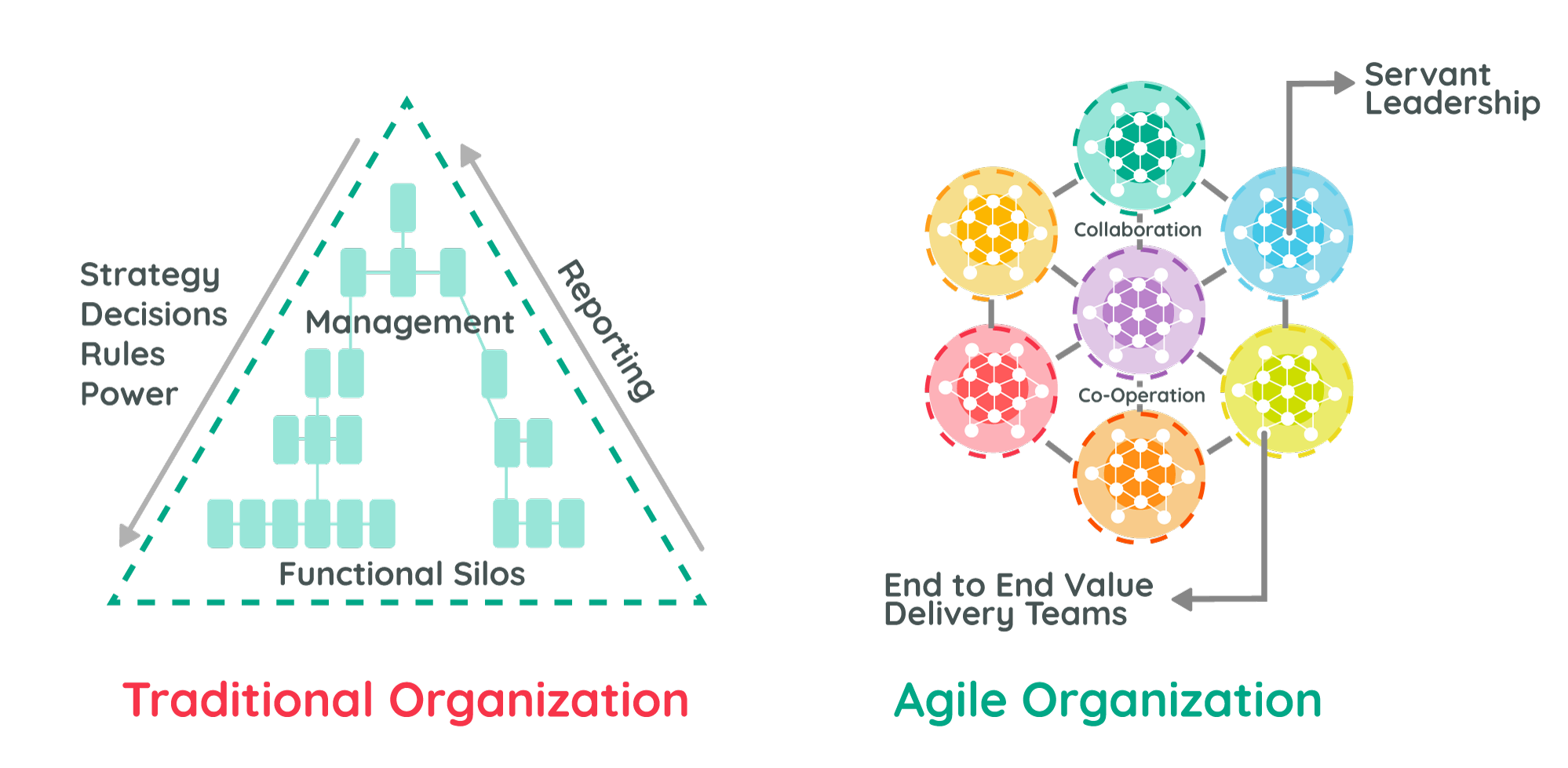Agility is the ability of an organization to adapt to new conditions and change direction. The new service-based economy replacing the production-based economy of the previous century makes companies’ ability to change much more important than before. This changing economic model and new market conditions have already caused many transformations and will continue to cause more. For example, we live in a period when being customer-oriented, instead of being investor-oriented, should have priority for the companies. Alternatively, users prefer to buy simple and focused products/services instead of multi-functional services. In fact, now users do not prefer to buy as before. As you know, instead of owning the products or services, the trend of renting/using them as a service gained popularity. It is likely that this trend will accelerate, and perhaps will be not be limited to costly items such as houses and cars, but also expand to areas that are difficult to imagine, such as clothing. Therefore, it is highly probable that in the forthcoming period new service models in many fields will enter our lives.
So, how ready are the companies when everything, from consumption habits to economy, is changing fundamentally? In fact, the situation is not very heartwarming for large organizations with a hierarchical and traditional functional structure with strong bureaucracy. Why? Because pyramid-like organizations have a structure in which power accumulates at the top but the value is expected to be created at the bottom of the pyramid and therefore speed and creativity are prevented by many stages and procedures. Furthermore, the production of a product/service to be released to the market is dependent on functionally independent units (such as marketing, software development, etc.) which are focused on different targets/priorities. These units are responsible for producing a piece of the product / service that does not create any value by itself (cannot be presented to the user alone). That is, no unit takes full ownership of end-to-end product / service. The decision processes are extended and the priorities conflict in these structures, which are not customer-oriented, and where the value is divided into many parties and the value creation has been made dependent, and the chain of command and order is preserved strongly. More importantly, instead of value creation in the organization, tension creation is triggered constantly. That is why companies now need to transform fundamentally and structurally, evolving these cumbersome structures into customer-oriented, end-to-end value creating team organizations.
As you can see from the above image, when defining an agile company, I’m talking about evolving into a flexible network (almost like a combination of many start-ups), which satisfies customer expectations and journeys end-to-end, and where, in this sense, many different competencies (such as sales, marketing, software development etc.) run together at the same target as part of the same team, with the minimization of hierarchy and bureaucracy. This new structure means establishing a new organization with a common purpose of creating customer satisfaction, and which, in this direction, can be renewed quickly according to the changes in the users and market; that is, fluid and living.
Let us consider a bank, for example. Let us define customers who want to manage their investments as a possible bank customer (persona). The goal of this person is to make the most of his/her earnings and get a comfortable future life. In this sense, let us form a team, which will adopt this goal and create and manage the banking products, services, and solutions end-to-end, for this persona (customer). Imagine that this team joins a variety of competencies, from sales to marketing, from software development to operation. This team will work dedicatedly, and develop services, test their ideas and create value in periods of a few weeks continuously. If we think about the process of a concept coming from the marketing, passing to the software with details and then going into the sales and operation from there, in the traditional organization structure, I think we can imagine how quickly this newly formed agile team will turn into a learning and evolving organization by generating ideas and testing them.
In summary, the digital new world will be the world of companies that can adapt to this and adopt rapid change as a fundamental characteristic feature. Therefore, this new era will be dominated by agile companies. On the other hand, unfortunately, becoming agile is not so easy. In order to become agile, the existing company structure, more importantly, the culture, and the ways of conducting business need to be changed entirely. What kind of changes am I talking about? Let me try to summarize with the table below and end my words.
Traditional Organizations |
Agile Companies |
Function-based organization. |
Team-based structuring where different competencies are joined together with a focus on value. |
Chain of command and order type management approach. |
Collaborative, teamplay-based governance structure. |
Commanding management and managers. |
Servant leaders. |
Focus on efficiency and operation. |
Focus on productivity and value. |
Long-term plans and control of following the plan. |
Focus on continuous planning, catching the winds of change and adaptation. |
Detailed plans, production of perfect product/service at the very end (at once). |
Continuous production of highly prioritized value with small steps. |
Bottom-up reporting, assumption and feeling-based decision-making mechanisms. |
Complete transparency, data-based decision-making mechanism. |
Longer approval processes, proceeding only with approving authority. |
Strong end-to-end teams with the power of decision. |
Limited tolerance for errors |
Learning based on experiments and errors. |
Mechanical, cumbersome organizational structure. |
Living organizational structure, which changes form in parallel to company strategies. |
Individual performance-oriented. |
Team-based performance-oriented within the framework of business objectives. |
Investor-oriented |
Employee and customer oriented. |







